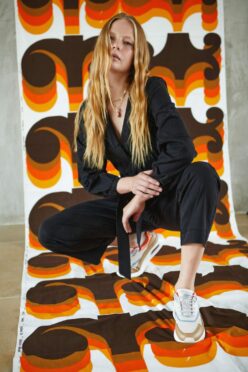Asymmetry is a flattering fashion trick that can put oomph into an otherwise plain garment or traditional fabric, just look at what Vivienne Westwood did with tartan, says Jacqueline Wake Young
There is no neckline that says “party” like an asymmetric neckline.
By its very definition it is off balance, irregular and not uniform.
It is a rule-breaker, an anarchist even, and brings with it the element of surprise.
It injects personality to even the most plain fabric and by extension, the wearer.
Unlike, for example, block colours which recede into the background and allow the wearer to shine, an asymmetrical neckline does a lot of the talking.
And what it says is, “look at me, I’m unusual, interesting and not what you were expecting”.
Asymmetry doesn’t only apply to necklines of course; it can apply to any part of a garment, such as the hem or in details like buttons or zips.
Designer extraordinaire Vivienne Westwood, who has often worked with tartan, is the mistress of asymmetry and in her skilled hands it is a thing of extraordinary beauty.
Her deconstructed jackets and dresses in particular are mind-bogglingly complex, to the extent that on the hanger it’s sometimes hard to work out what they are.
Once on, they are fabulously flattering, which is the other quality or asymmetrical clothing.
In the way that square necklines are said to emphasise the curves of the face and figure, asymmetrical necklines accentuate the symmetry of the face.
This is something we might want to use to our advantage, because in the scientific study of attraction, symmetrical features have long been rated as beautiful, with actress Grace Kelly being held up as a particularly good example.
Meanwhile an asymmetrical hem or hanky hem, creates a softer, more flattering line which can be especially useful in autumn as we swap out of pretty shoes and into clunky boots.











Conversation